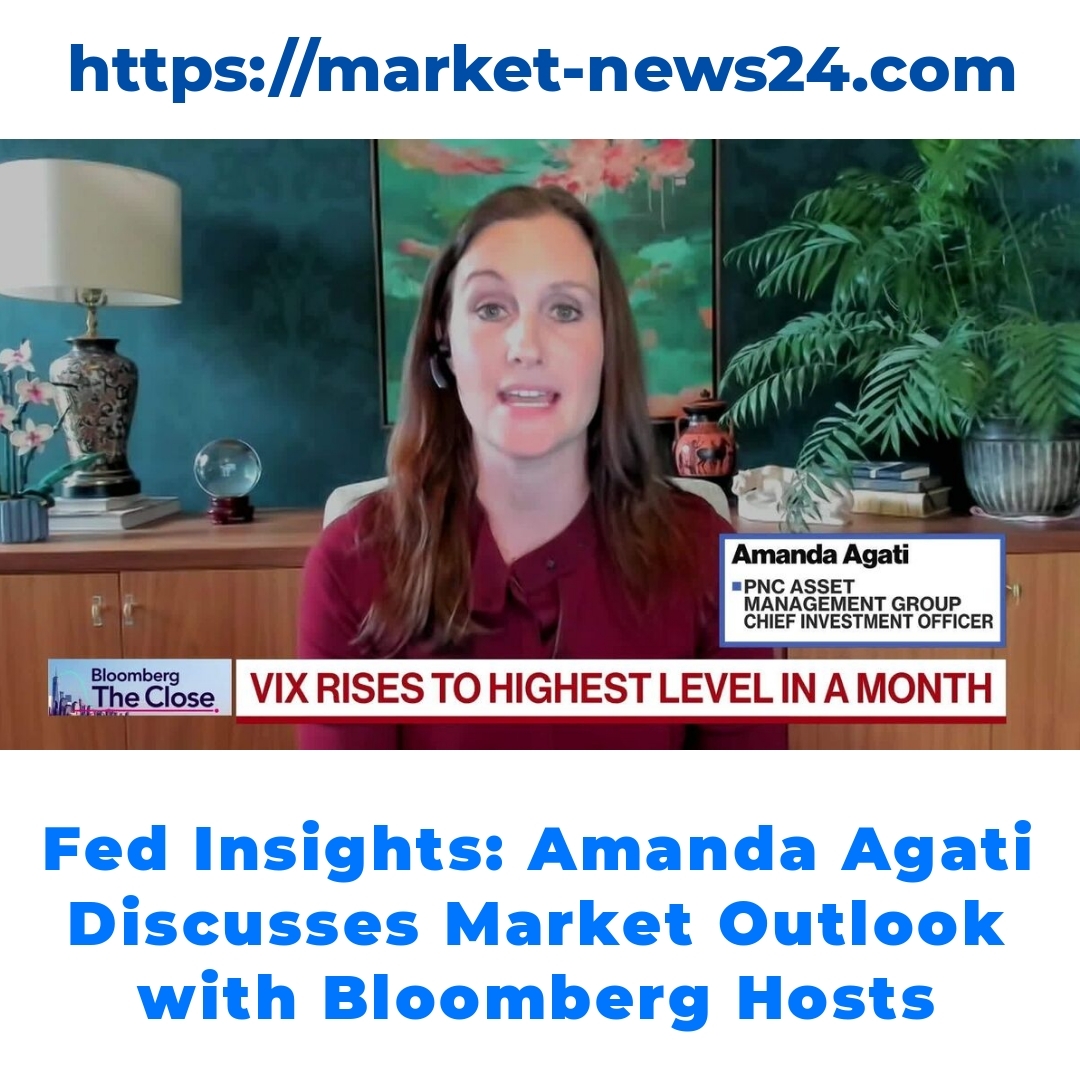The Federal Reserve plays a crucial role in shaping the financial landscape and influencing market outlooks and investment strategies. Amanda Agati’s insights from a Bloomberg discussion highlight the significant impact of the Fed’s decisions. Understanding how the Federal Reserve affects interest rates and economic growth is essential for investors navigating today’s dynamic markets.


The Federal Reserve’s Current Stance on Interest Rates
The current interest rates set by the Federal Reserve play a significant role in shaping the investment landscape. As of today, the Fed has maintained a policy aimed at balancing economic growth while keeping inflation in check. Understanding these interest rates is crucial for investors because they directly influence borrowing costs and returns on investments.
When interest rates are low, it typically encourages borrowing and spending, leading to an uptick in economic activity. Conversely, higher interest rates can slow down economic growth as borrowing becomes more expensive. Historically, the Federal Reserve’s monetary policy aims at fostering a stable economic environment. By adjusting interest rates, the Fed not only impacts the economy but also provides guidance on how investors might approach their investment strategies.
Analyzing the Market Outlook in Light of Fed Decisions
The current policies of the Federal Reserve set the stage for the market outlook. Generally, if the Fed signals a willingness to lower interest rates, investors often perceive this as a green light to invest more aggressively, anticipating economic growth. On the flip side, if the Fed indicates that rates may rise, investors may become more cautious, adjusting their portfolios accordingly.
The Fed’s influence on economic growth is profound. Their decisions can lead to increased consumer spending, which in turn can create a favorable environment for businesses. This cyclical relationship affects financial market conditions, making it essential for investors to keep a finger on the pulse of Fed announcements. Adjustments in interest rates can prompt rapid changes in investor behavior, often resulting in market volatility that savvy investors need to navigate effectively.
The Impact of Federal Reserve Decisions on Financial Markets
Examining case studies helps illustrate the impact of Federal Reserve decisions on financial markets. For instance, during periods of economic uncertainty, the Fed has historically lowered interest rates, leading to increased investment in equities as investors search for better returns. This shift in investor sentiment showcases how the impact of Federal Reserve decisions can create distinct trends in market performance.
It’s important to understand both the short-term and long-term effects of these decisions. Short-term market fluctuations might be due to immediate responses to Fed announcements, while long-term trends will depend on sustained economic conditions. Hence, investors should closely monitor the economic indicators that influence the Fed, as changes can signal potential opportunities or risks in the financial markets. Understanding the impact of Federal Reserve decisions on financial markets prepares investors for potential shifts in their investment landscape.
Navigating Market Volatility with Smart Asset Management
In a fluctuating interest rate environment, strategizing your investment portfolio becomes essential. Smart asset management can help mitigate the risks that come with market volatility. Diverse asset allocation allows investors to spread out risk and minimize the impact of any sudden shifts in interest rates.
Techniques such as rebalancing your portfolio, employing hedging strategies, and focusing on income-generating investments are key aspects of navigating market volatility with smart asset management. By staying proactive and informed about Federal Reserve policies, investors can position themselves better to not only protect their investments but also take advantage of potential market opportunities.
Future Trends and Predictions in the Stock Market
Looking ahead, the stock market’s future trends will largely hinge on potential shifts in Federal Reserve policies. Investors should be actively considering how these changes might influence their strategies. Frequent evaluations of market conditions can provide insights into how to adjust portfolios effectively and seize upcoming opportunities.
As we analyze future trends in the stock market, it’s crucial to remain adaptable. Economic conditions, inflation rates, and the behavior of the Fed can all lead to significant shifts. Understanding these dynamics enables investors to make informed decisions that align with their financial goals, especially in the face of uncertainty.
Conclusion
In conclusion, the Federal Reserve plays a critical role in shaping market outlooks and influencing investment strategies. By carefully monitoring the Fed’s stance on interest rates and understanding its broader economic implications, investors can navigate the complexities of the financial markets more successfully. As economic growth continues to evolve, staying informed about Federal Reserve developments is vital for making informed investment decisions.
FAQ
What are the current interest rates set by the Federal Reserve?
As of today, the Federal Reserve has maintained interest rates designed to support economic growth while controlling inflation. The exact rates can fluctuate and are adjusted based on economic conditions.
How do Federal Reserve interest rates influence borrowing costs?
Low interest rates generally encourage borrowing since loans become cheaper. This leads to increased spending and economic activity. On the other hand, higher interest rates make borrowing more expensive, which can slow economic growth.
What should investors understand about the Fed’s monetary policy?
Investors should monitor the Fed’s decisions closely, as changes in interest rates can signal shifts in economic conditions. This understanding helps inform investment strategies and potential portfolio adjustments.
How does the Fed’s stance affect market volatility?
Interest rate changes can lead to rapid shifts in investor behavior. When the Fed lowers rates, investors may buy more equities, while signals of rising rates may prompt caution and portfolio adjustments. This dynamic can create volatility in financial markets.
What strategies can help in managing investments during volatile times?
- Diversifying your asset allocation to spread risk.
- Rebalancing your portfolio regularly to adapt to changing conditions.
- Employing hedging strategies to protect against significant losses.
- Focusing on income-generating investments that can provide stability.
How can Fed decisions impact long-term investment trends?
Investors should consider both short-term responses to Fed announcements and long-term trends driven by sustained economic conditions. Continuous evaluation of economic indicators is crucial for identifying potential opportunities or risks.
What future trends should investors be aware of regarding the stock market?
Investors should stay informed about possible shifts in Federal Reserve policies, as these can significantly influence stock market trends. Understanding economic conditions and the Fed’s responses can help in making informed investment decisions.





